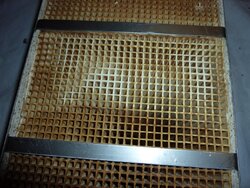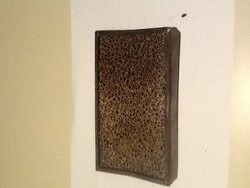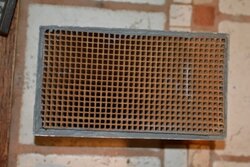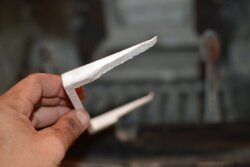A short history with my Jotul Firelight 12:
1. Purchased all three stoves with what appears to be original OEM Jotul cat's in place. They were all in very good cosmetic shape, due to the previous owners not using stoves on a frequent basis, but probably each beyond 15 years old.
2. Replaced cat's in the two stoves I use (third stove is a spare) with Condar Steelcat's. The Steelcat was trouble from day 1, being far too reactive initially, and then distorting and plugging (probably as a result of being too reactive).
3. Condar acknowledged trouble from many others using Steelcats in my stove (and other similar designs), and suggested I switch back to traditional ceramic. I pointed out the potential problem of the "expanding gasket" they advertise, installed between the ceramic element and the steel can surrounding the cat. Their tech (Charlie?) stated it is not an expanding gasket, and will not cause the can to expand, or damage to the refractory chamber into which my cat is installed.
4. Installed two Condar ceramic cat's for the last month of last season. They ran beautifully, but inspection this summer revealed that the gasket/can did expand and damage the refractory components in both of the stoves where I was running them. Some of these components were brand new, cost to me ~ $1000 to repair.
So, now I'm out shopping for a new cat. I see Applied Ceramics offers the ACI-20C, a similar ceramic element in steel can construction with insulating gasket between, used by both Jotul OEM and Condar. What I can't figure out is whether it will expand when heated, the way the Condar gasket does. Anyone have experience with the canned ceramic cat's from Applied Ceramics?
1. Purchased all three stoves with what appears to be original OEM Jotul cat's in place. They were all in very good cosmetic shape, due to the previous owners not using stoves on a frequent basis, but probably each beyond 15 years old.
2. Replaced cat's in the two stoves I use (third stove is a spare) with Condar Steelcat's. The Steelcat was trouble from day 1, being far too reactive initially, and then distorting and plugging (probably as a result of being too reactive).
3. Condar acknowledged trouble from many others using Steelcats in my stove (and other similar designs), and suggested I switch back to traditional ceramic. I pointed out the potential problem of the "expanding gasket" they advertise, installed between the ceramic element and the steel can surrounding the cat. Their tech (Charlie?) stated it is not an expanding gasket, and will not cause the can to expand, or damage to the refractory chamber into which my cat is installed.
4. Installed two Condar ceramic cat's for the last month of last season. They ran beautifully, but inspection this summer revealed that the gasket/can did expand and damage the refractory components in both of the stoves where I was running them. Some of these components were brand new, cost to me ~ $1000 to repair.
So, now I'm out shopping for a new cat. I see Applied Ceramics offers the ACI-20C, a similar ceramic element in steel can construction with insulating gasket between, used by both Jotul OEM and Condar. What I can't figure out is whether it will expand when heated, the way the Condar gasket does. Anyone have experience with the canned ceramic cat's from Applied Ceramics?









 The cement says its rated to 3000, so I guess its an experiment. From what I read, the CAT maxs out around 2300. Theoretically I should be ok? I have the original CAT which is still in working order, just rode hard if this experiment eats the bed. I will post results after burning for a while.
The cement says its rated to 3000, so I guess its an experiment. From what I read, the CAT maxs out around 2300. Theoretically I should be ok? I have the original CAT which is still in working order, just rode hard if this experiment eats the bed. I will post results after burning for a while.